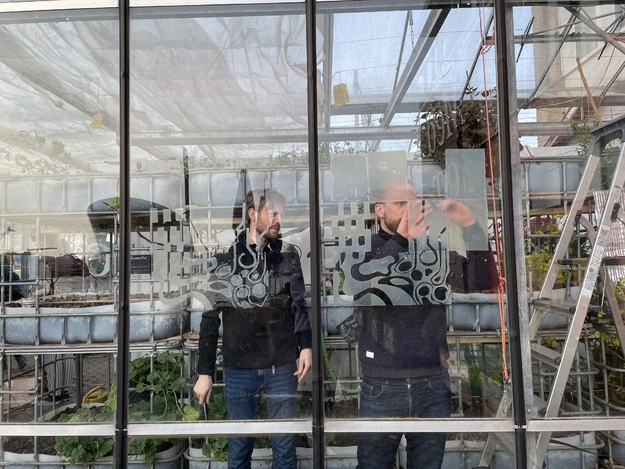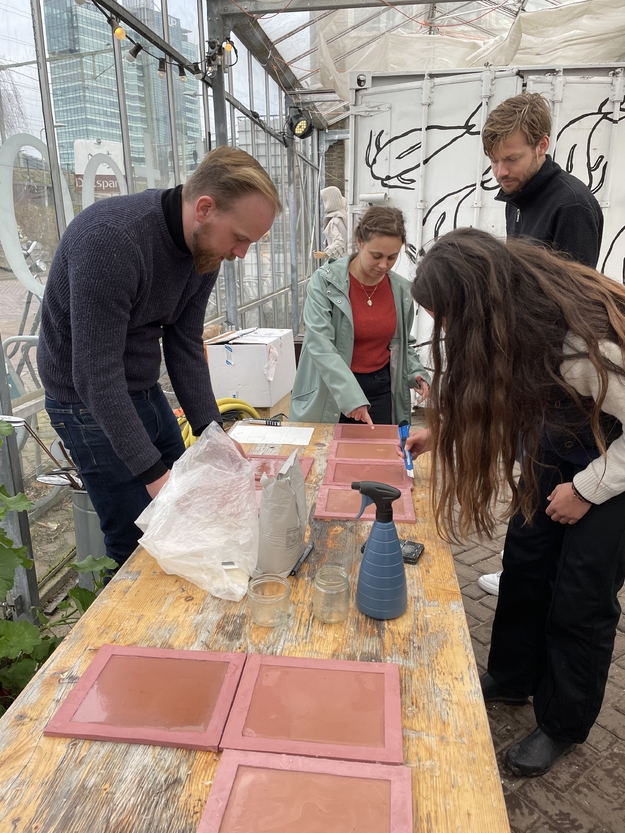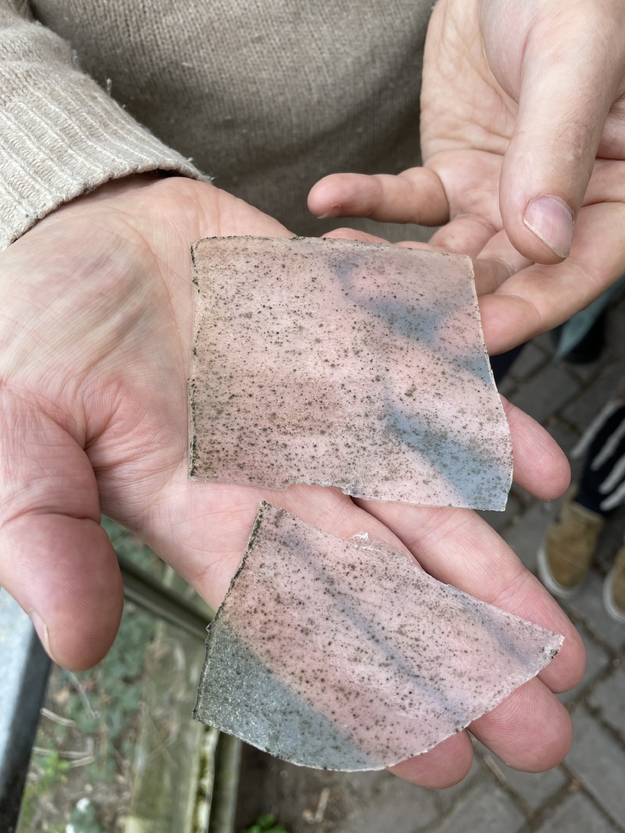For the past few weeks, me and my fellow students have been working on making natural 'stained glass' and showing the concept of growth. We did this by using natural ingredients like agar-agar and fungi spores to make a sheet that can be stuck to the windows. The sheets on the glass windows create a bit blurred and colored view through to the other side and the fungi spores and algae give different patterns and forms. Over time the fungi show us growth as they will expand and live on the window sheets. But it also shows us that with growth comes loss, since this project is temporary and sheets fall off. The living material also showed us that growth is not always predictable and will find its own way, so when designing with it be prepared and open to being surprised. The theme of growth fits in perfectly within the environment we were working in: the glasshouse of Media Matic. Not only are edible plants being grown in this glasshouse in a new innovative way, but all projects being done and the whole concept of Media Matic shows growth as well. How we can grow into a more sustainable, innovative, plant-based life.
A way to see growth
Stained glass
Stained glass is a historical architectural element that has already been used for centuries. David Habets, landscape architect and artist, made a natural version of stained glass by using lichen. He is now guiding us; students in landscape architecture, architecture and urbanism, by making a different version of this artwork; stained glass with fungi. In this course, we are testing and experimenting with new (natural) materials. For me, this is a way to think about the following questions: How can architecture become more sustainable and circular? and how can we use art to convey a message?


